One great way to get a butterfly garden started is to plant a really good nectar providing species; and then observe the butterflies that come into your garden to feed. This will be a good indication of which butterfly species are already present in the general area.
The adult stage is technically called the ‘imago’; but it is commonly called a ‘butterfly’. This is the reproductive life stage in which the creature’s main purpose is to find a mate and the host plant on which to lay the eggs of the next generation. The butterfly seeks nectar which provides it with energy in the form of simple carbohydrates.
Once you know which species are in the area, you can plant the appropriate larval host plants. Learn what the different life stages look like; and then, by providing for the needs of every life stage you will be creating a true butterfly garden.
When your garden is host to caterpillars, there will also be pupae. The pupae will usually be a distance from the larval host plants, and can be attached to any number of surfaces; herbaceous plants, shrubs or trees, fence posts or fencing wire, or buildings. They are often hard to see; so butterfly gardeners tend to keep their gardens a little ‘messy’, prune late in any season, and do the pruning with a bit of caution.
Butterfly Nectaring Plants
Generally speaking the larger butterflies need a ‘landing pad’; but all the butterflies need a place to put their feet when they’re visiting a flower. Many small flowers held in a panicle, like Buddleia, or flowers in dense terminal clusters like in Lantana or Verbena, attract butterflies.
Flowers in the composite family (Aster, Sunflower, or Daisy), offer a ‘landing pad’ when fully opened. Each of the tiny individual flowers that make up the disc, and the petals, have a nectary; providing a lot of food-energy without too much work.
Butterflies are not important pollinators of plants, but their beauty certainly adds to the charm of any garden. All creatures appreciate an easy, abundant form of food; so by planting a drift of colorful nectar providing flowers, you can be sure to attract butterflies into your garden.
Butterfly Bush – Buddleia davidii
This is a fast growing shrub, native to China, but very adaptable to our soils and climate. It can grow to about 6 feet or more, is semi-deciduous, and once established it is also drought-tolerant. Many different flower colors are available; the blues, pinks and purples are favored by butterflies. Flowers occur on the new growth each spring; coppicing the shrub in late fall encourages new growth, and thereby more flowers.
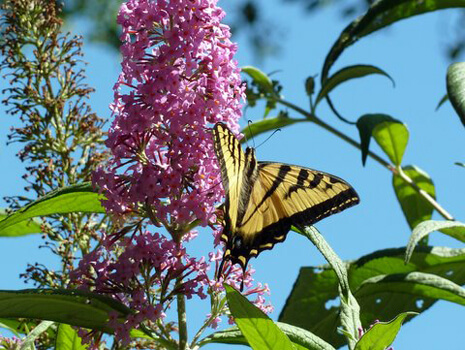
Western Tiger Swallowtail on Buddliea – photo by Nancy Brown
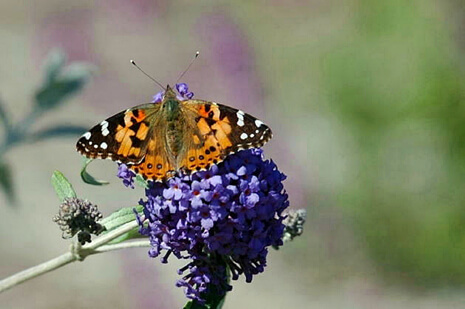
Painted Lady on Buddleia
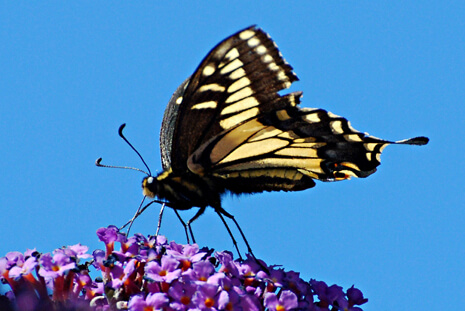
Anise Swallowtail with proboscis extended into a Buddleia flower
Lantana – the L. camara cultivars
This is a sub-shrub that usually stays about 3 feet high. It is native to South Africa, and somewhat frost-tender. It may loose most leaves during a cold winter, and is sometimes slow to leaf out again. But the flowers are profuse, and are loved by butterflies. Choose cultivars with pink, orangey, or red flowers; these are the colors best noticed by butterflies!

Anise Swallowtail on Lantana
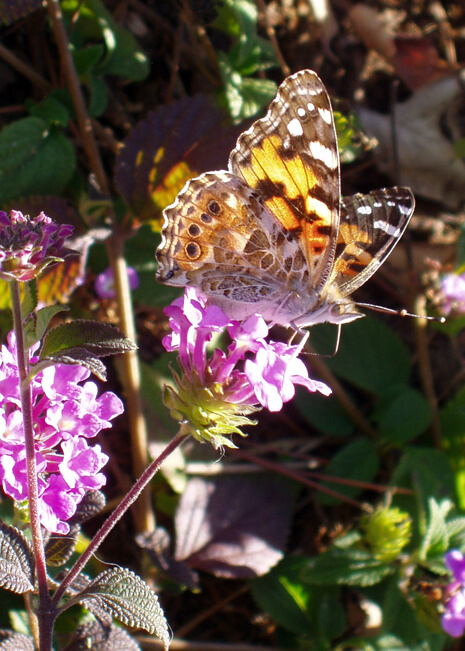
Painted lady on Lantana
Verbena – V. bonariensis or V. rigida
These verbenas are perennials native to South America, but very happy in California gardens. The tiny individual lowers are held in small dense terminal clusters, and are light blue or purplish. Verbena bonariensis grows in a clump, with flowering stalks reaching as much as 4 to 5 feet high. V. rigida is a spreader, flowering stalks are usually no more than 2 feet high. ‘Polaris’ is a form of V. rigida with light blue flowers. Butterflies flock to a drift of these plants in bloom.

Skipper on Verbena rigida ‘Polaris’
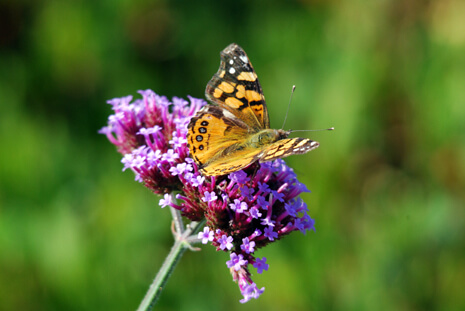
West Coast Lady on Verbena bonariensis
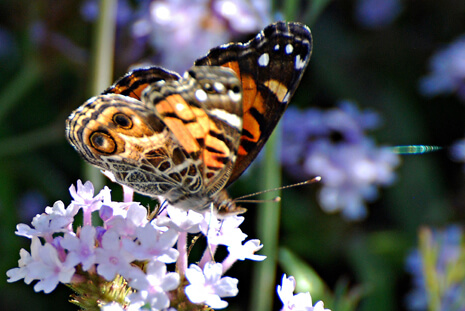
Female American Lady on Verbena rigida ‘Polaris’

Skipper on Verbena bonariensis


